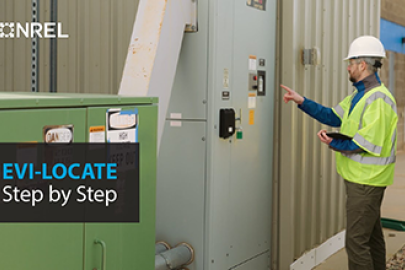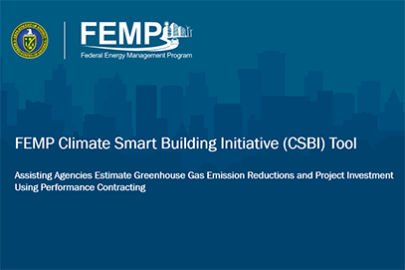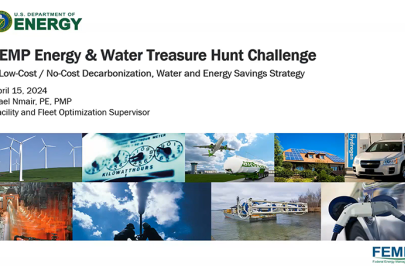The Technical Resilience Navigator is a novel web-based resilience planning tool that uses a risk-informed approach to help users identify site-specific vulnerabilities, hazards, and threats to critical loads.
Federal Energy Management Program
July 15, 2021The Technical Resilience Navigator is a novel web-based resilience planning tool that uses a risk-informed approach to help users identify site-specific vulnerabilities, hazards, and threats to critical loads.
Severe weather events and malicious incidents can be devastating to a federal facility's water and energy supplies—and ultimately an organization's mission.
As events increase in frequency and severity, the problems they cause could get worse.
Holistic resilience planning can help federal agencies anticipate, withstand, or reduce the impact of energy and water outages caused by a host of changing climate conditions.
To better prepare federal facilities for the future, the U.S. Department of Energy's Federal Energy Management Program developed the Technical Resilience Navigator with subject matter experts from the Pacific Northwest National Laboratory and the National Renewable Energy Laboratory.
The Technical Resilience Navigator (TRN)—or "Turn" for short—is a novel, web-based resilience planning tool that uses a risk-informed approach to help users identify site-specific vulnerabilities, hazards, and threats to critical loads.
By using the TRN, users can understand whether a facility's water and energy supplies can sustain mission-critical functions under normal or disrupted conditions.
Studies show that investing time and resources in resilience planning upfront can help offset recovery costs incurred from a service disruption. In fact, every $1 spent on hazard mitigation or resilience saves the nation $4 in future disaster recovery costs from infrastructure mitigation.
TRN users walk through a series of six interactive modules, each with a set of supporting tools and resources. This step-by-step site-level planning process covers establishing a planning scope, developing a baseline, assessing risk, and developing, prioritizing, and implementing solutions.
The TRN allows users to customize resilience planning for their site. It guides users to develop and prioritize resilience solutions based on multiple decision criteria. Sites incorporate their unique risk factors and key decision criteria, such as sustainability, decarbonization, or energy efficiency goals.
By understanding the potential impact and outcomes of implementing different resilience solutions—like consolidating critical loads or designing a microgrid for emergency backup—users can adopt the solutions best suited to their organization's unique needs.
The TRN is free, flexible, available to the public, and broadly applicable across many types of sites and facilities.
Visit trn.pnnl.gov/to get started today.
Learn more about Resilience Planning and Valuation.










